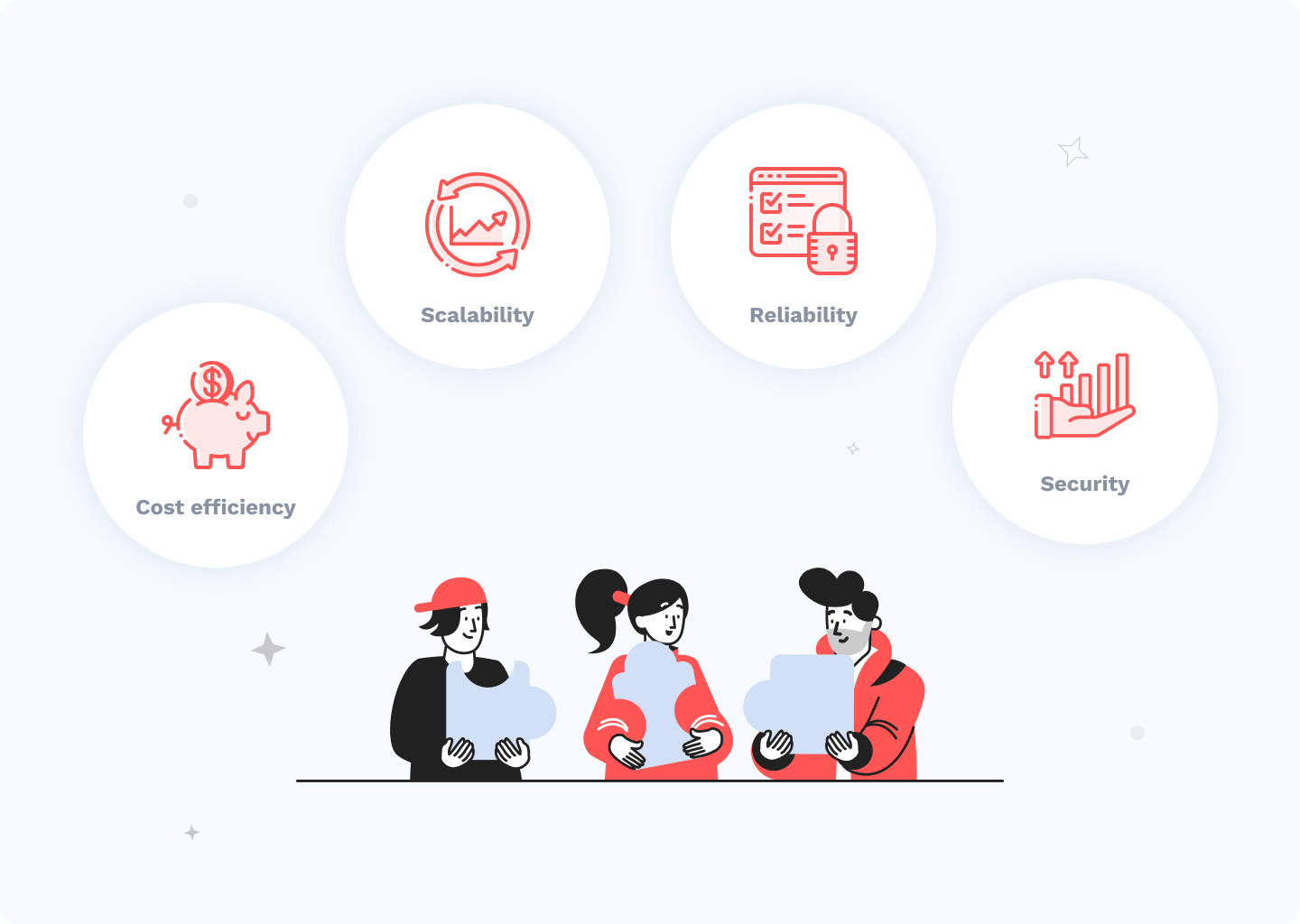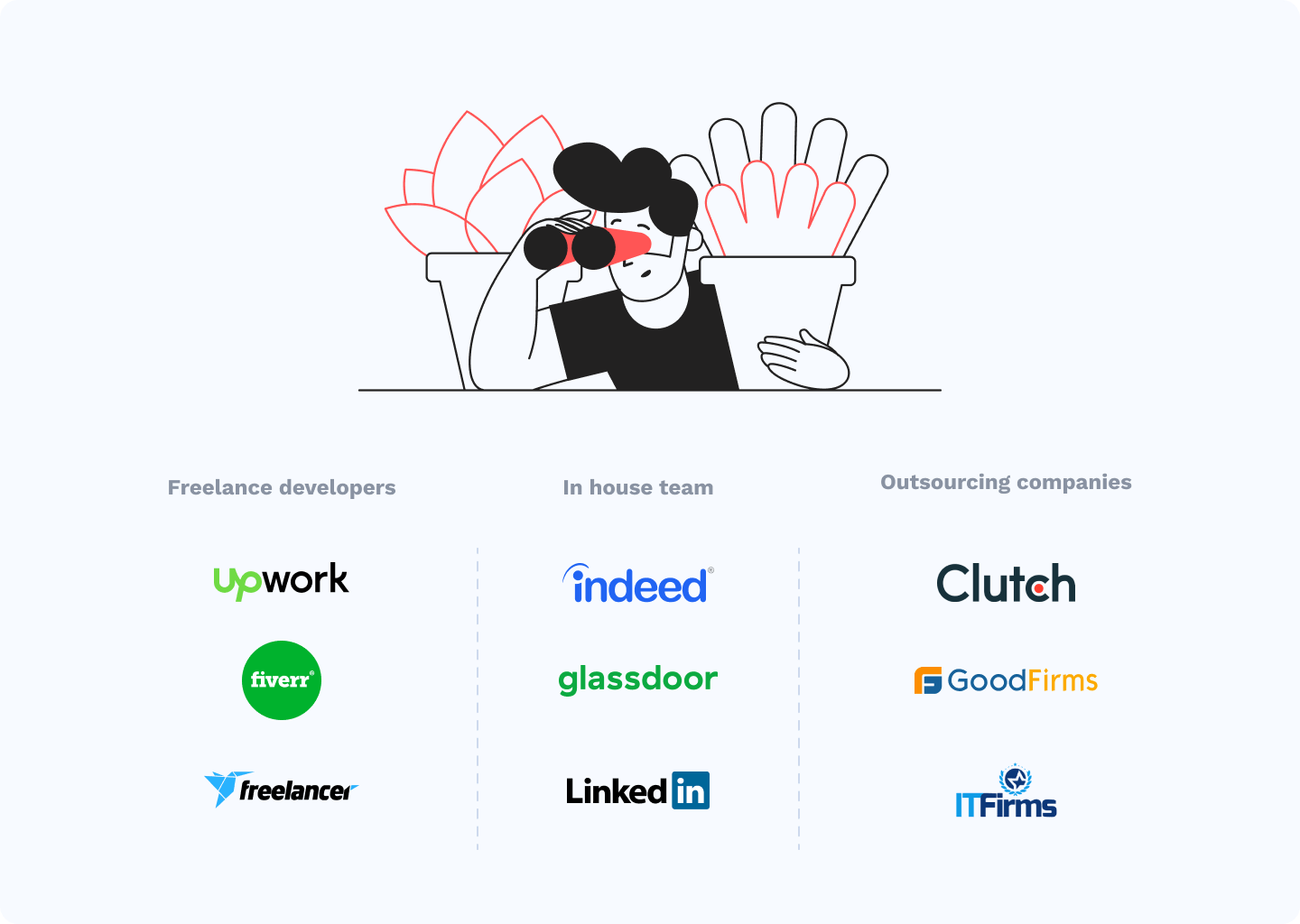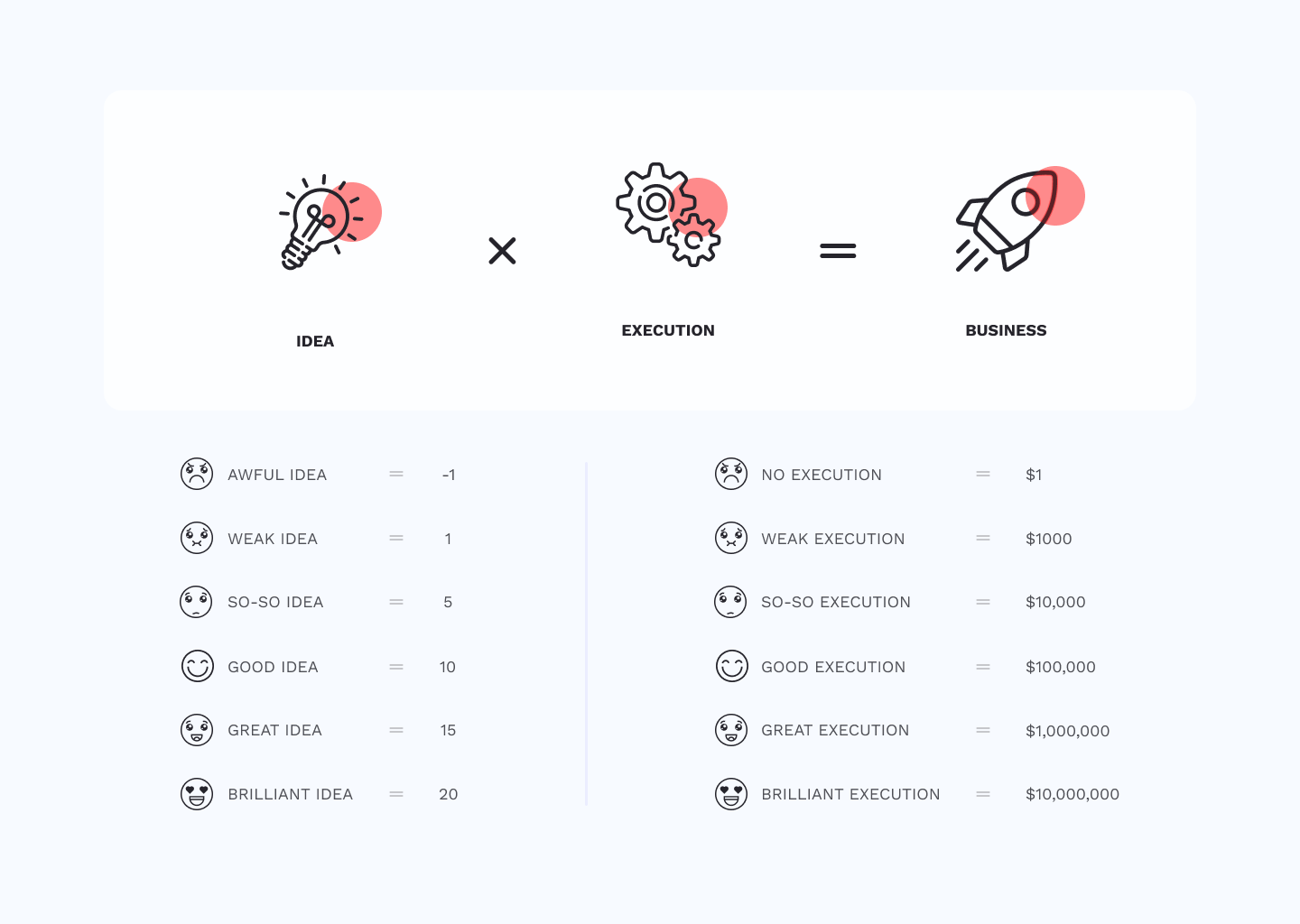SaaS products have been gradually getting more and more traction in recent years and will continue to do so in the future. According to the latest report from Gartner, end-users will spend up to $304 billion in 2021, which is 18.4% more than in the previous year. The market growth that SaaS has achieved over the past decade is truly impressive: from $5.56 billion in 2008 to $157 billion in 2020. Why is a Saas product development so popular, and what benefits does it bring? We will talk about the most prominent use cases for it and how to create SaaS software.
What is SaaS Product Development?
SaaS stands for Software as a Service and allows customers to use the application anywhere on a subscription base. What makes SaaS so popular is that users don’t need to install anything on their devices but can use the application via the Internet. Thus, any updates and changes will remain behind the scenes, and users can enjoy the SaaS platform without any effort from their side.
Developing a New SaaS Product: Software Types
There are multiple use cases for SaaS products, but we won’t cover all of them. Instead, we’re going to focus on the types of SaaS platforms that can enhance your business.

Vertical SaaS
Amid the oversaturation of most markets, niching down has become a very prominent trend for many businesses, and vertical SaaS is designed to cover their needs. Vertical SaaS cater to the needs and requirements of a narrow and specific industry like banking or healthcare.
Why SaaS?
Companies choose to develop a vertical SaaS due to its affordability since they require less capital to target their potential audience. Both sales and marketing budgets tend to be lower because the application caters to a particular niche. A vertical SaaS also ensures a lower barrier of entry and can reach its target audience quicker and more precisely.
Big Companies: Veeva offers solutions for the healthcare industry, and HotSchedules handles restaurant management.
CRM
Customer Relationship Management (CRM) is an array of techniques, strategies, and tools that improve the interaction with existing and potential clients. By collecting, storing, and analyzing user information, CRM systems draw conclusions about customer behavior and tendencies and help sales and marketing specialists make data-driven decisions.
Why SaaS?
Since CRM stores massive amounts of sensitive data, security issues play a significant role when it comes to purchasing decisions. But a SaaS vendor takes full responsibility for protecting data and makes sure no third-parties can access vulnerable information. Since their reputation depends on the security level they ensure, SaaS providers take this issue very seriously.
Big Companies: Zoho CRM and HubSpot CRM.
ERP
Enterprise Resource Planning (ERP) serves as a tool that automates business processes by consolidating data from different departments like accounting, HR, manufacturing, sales, and marketing. By unifying the processes across the firm, executives can run various scenarios, identify possible drawbacks and failures and make more informed decisions.
Why SaaS?
The best part about SaaS developed ERP is its ability to scale up and down seamlessly. Using traditional ERP software, businesses need to consider the growing cost of maintenance when expanding, but it is no concern with the cloud. Their SaaS platform will grow with the company by gradually updating whenever the organization feels the need.
Big Companies: Oracle and Sage ERP.
Billing software
Billing software is a tool developed to deal with billing tracking and invoicing. It also tracks the expenses associated with specific projects and customers. Billing software can be straightforward and basic and cater to the needs of freelancers and small businesses. However, some more sophisticated tools are designed to fulfill the needs of organizations with complex structures.
Why SaaS?
The most challenging part of building your own billing tool is PCI (Payment Card Industry Data Security Standard) certified. Being a long and complicated process, it’ll cost you a substantial amount of money. SaaS platforms have already invested time and money in getting certified, and you can simply use their services.
Big Companies: Xero and QuickBooks.
Project management
Project management (PM) software is designed to plan, organize, and manage projects. These tools help project managers and other teammates to collaborate and always stay in touch, have access to the resources, monitor the spending, and keep track of the deadlines.
Why SaaS?
One of the essential features of any project management tool is collaboration. The whole team must have access to project-related information. Since the SaaS vendor stores all the information in one shared space, anyone assigned to the project can quickly and easily access any files they need.
Big Companies: Jira and Basecamp.

Why Should Your Company Build a SaaS Application?
Quick setup
The biggest advantage of SaaS applications is the ease of implementation. Users can simply register or download the application — and it becomes available for them on the PC and/or on smartphone and tablet.
Cost-effectiveness
SaaS applications save costs at every step: the upfront costs decrease due to their easy and quick setup, whereas further cost savings come from the lack of maintenance and upgrades expenses. On top of that, SaaS tools offer multiple packages that fit the exact needs of businesses. You don’t have to overpay for the services you aren’t using and only focus on the features that further drive your business.
It becomes especially important for small businesses that risk a lot when signing up for a long-term contract. But large corporations will also benefit from scalable and subscription-based SaaS platforms.
Effortless updates
SaaS developers monitor the market, collect user feedback, and continuously come up with new features. The application will be automatically upgraded every now and then, and you will get the latest version.

Step-by-Step Guide on How to Build a SaaS Platform
Depending on your needs and goals, you have two options: you can build a SaaS product from scratch or rewrite the existing one.
Converting an existing app
Analysis
Do market research and conduct a comparative analysis among the most prominent existing solutions. Select the features that you think are the most important for clients and will benefit your application. Focus on only the most relevant features this time around since you can gradually add more advanced functions later on if the user feedback shows the need.
Building a team
Try to objectively assess your team’s expertise to maintain and manage the product changes. If needed, organize training for your developers or hire an outsourcing SaaS development company.
Choosing a cloud provider
Familiarize yourself with the cloud providers available on the market. Your application will be hosted in the cloud and the vendor will be responsible for maintenance, management, and security which is why the vetting process is so important.
Migration
The migration process is long and bumpy, so make sure your team is capable of executing it. If not, consider hiring SaaS consultants or developers who will simplify and shorten the development cycle.
Building from scratch
Market analysis
Similar to rewriting the application, building SaaS applications also requires a thorough market analysis. Detailed research will give you an understanding of what clients value and need as well as the current market demand. During this phase, you should outline whether your target audience is willing to pay for your product and whether developing a new SaaS product will accommodate your company’s business goals.
In a nutshell, you and your team, together with stakeholders, should answer the following questions:
- Who is your target user?
- What are their needs and requests?
- Who are your main competitors?
- What unique features do they present and how are you going to stand out?
- What business model did they adopt and what approach will you uptake?
Answering these questions will help you identify a suitable SaaS product development strategy and build a SaaS application that will reach its customers.
Choosing a technology
Before going into more detail on how to build a SaaS product, you should define the appropriate technical stack. The current IT market has a lot to offer: depending on your goals, expertise, and budget, you can choose from myriads of various languages, frameworks, and tools for the SaaS product development process. It’s essential to understand that there is no right or wrong answer as your choice is contingent on your goals and current business demands.
- Frontend
Frontend development revolves around the user, what they see and interact with. The main focus of frontend developers is the user experience. They take care of the design, debugging, code analysis, and essentially make sure that users have the best experience with the application.
The most prominent language for SaaS development is JavaScript alongside frameworks like React.JS and Angular. Another rising star of SaaS development is TypeScript – an open-source programming language that has already attracted many businesses.
- Backend
As opposed to the frontend, the backend handles the server-side of the development process. Backend developers deal with the “behind the scenes” — database, application, and server. They make sure the code they write facilitates smooth communication between the database and the information on the screen and performs updates.
For backend SaaS development, you can choose Ruby, Python, Java, and other technologies together with frameworks like Ruby on Rails, Node.JS, and many others. Even though it has been on the market for three decades, many companies still choose Java for backend development. It still holds the first place according to the study made by CodingDojo and continues to be the favorite language for many developers. Together with Java, Node.JS remains a popular choice for programmers by ensuring better scalability and faster time-to-market.
- Database
Databases store and organize data and can be accessed from a computer system. They consist of multiple tables containing large amounts of information.
Here you also have a big choice; however, the most popular databases include MySQL, NoSQL
Databases keep the necessary information for your applications. We suggest PostgreSQL, MySQL, or NoSQL.
Creating a team

Next, you should have a team of professionals who know first-hand how to build a SaaS platform. As a rule, your SaaS team will consist of a business analyst, UX/UI designer, QA engineer, project manager, and several software developers.
Here you have three main options:
- In-house
You can hire an in-house worker who will become a part of your team and share your business goals. It’s a great approach, however, the most expensive one. When you hire in-house, you have to cover worker’s medical insurance, dental care, office space, lunches, and so on.
- Freelancers
Another popular hiring model is freelancing. To find IT freelancers, visit platforms like Toptal, Upwork, Freelancer, and many others. These websites give you access to a very wide pool of candidates from all over the world. Although this approach is cheaper, you do have a risk of hiring an unreliable employee. Another downside to freelancing is the lack of a vetting process, which you’ll have to uptake.
- Software development company
Finally, you can use SaaS development services from a third-party company. This way, you delegate the development process to a team of professionals who know how to develop a SaaS product. Having handled multiple projects, they have enough experience and knowledge to solve complex problems and get the best results.
Build an MVP
MVP stands for minimum viable product and serves as a prototype with a few important features. MVP is a perfect way to early test your idea and identify its feasibility and attractiveness. Even though it is just a prototype, it should solve users’ main problem and appeal to your target audience. We highlight the following goals of launching an MVP:
- Feedback collection
You will collect the most valuable information about what users liked and disliked, what features should be added or removed, and the overall user experience.
- Idea testing
You will identify whether the application will find its place on the market. Building an MVP will help you measure the demand for your application.
- Experiment with Concepts
You can build various hypotheses and test them by launching incremental MVPs.
How to build a successful MVP?
- Define the problem;
- Understand user pain points and needs;
- Focus on the simplest way to solve the issue;
- Research your competition and do better;
- Prioritize features;
- Build a product roadmap;
- Build an MVP, measure your success or failure, and learn from mistakes;
- Launch your final MVP.
Final Thoughts
SaaS platforms have revolutionized the market and gave businesses new exciting opportunities. Follow our building guide, find unique features you can offer, and contact SaaS experts to receive helpful tips. If you don’t have the capacity to autonomously build an app, OSDB is here to lend a shoulder for you to lean on.
OSDB is a software development company that has extensive experience in platform development. Being a startup ourselves, we understand your goals, needs, and challenges, and are ready to offer our knowledge to solve your issues and bring your business to a new level.
We also understand the business side of software development and know how to attract users and turn them into recurring customers. If you would like to learn more and get detailed information about the step-by-step process in building a SaaS solution, contact our team of experts.




